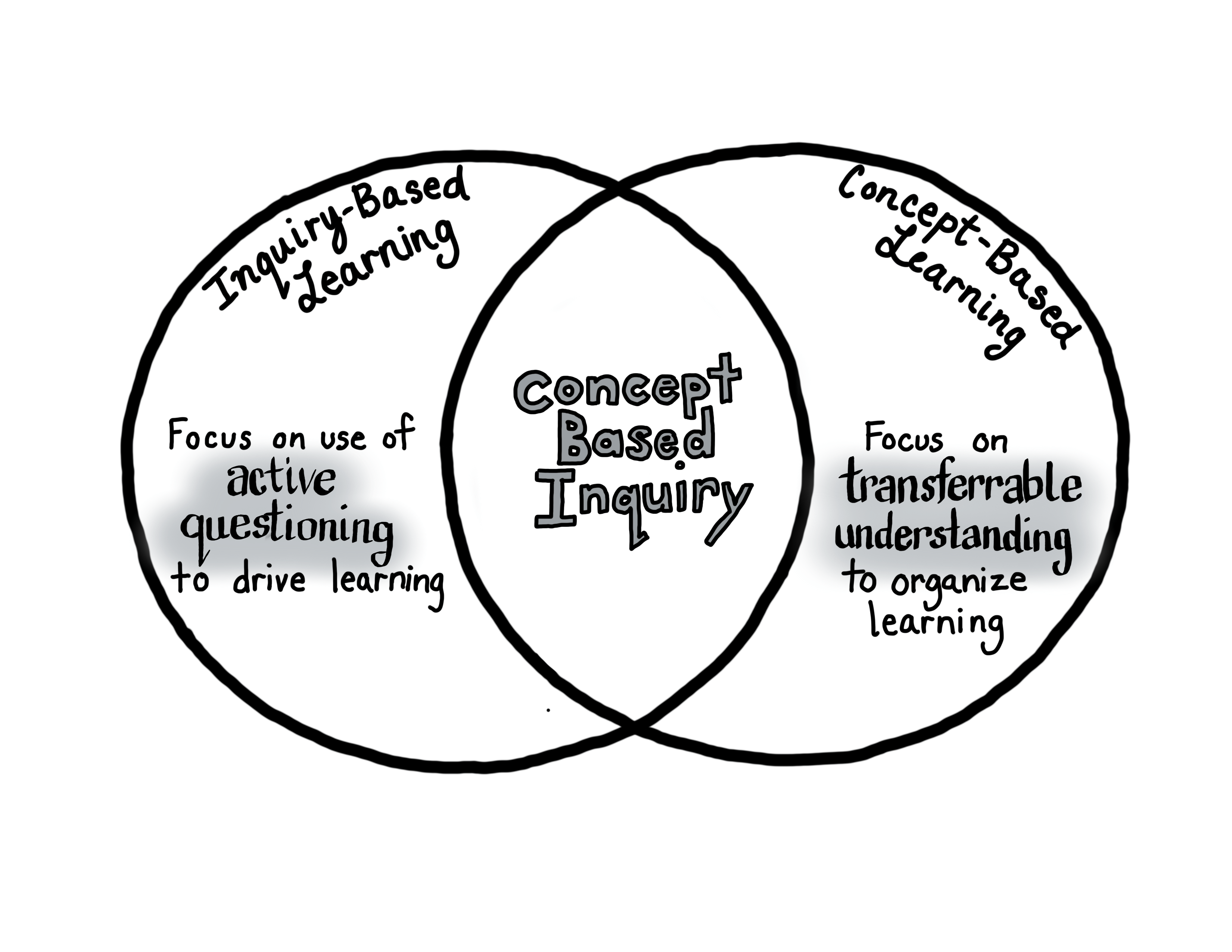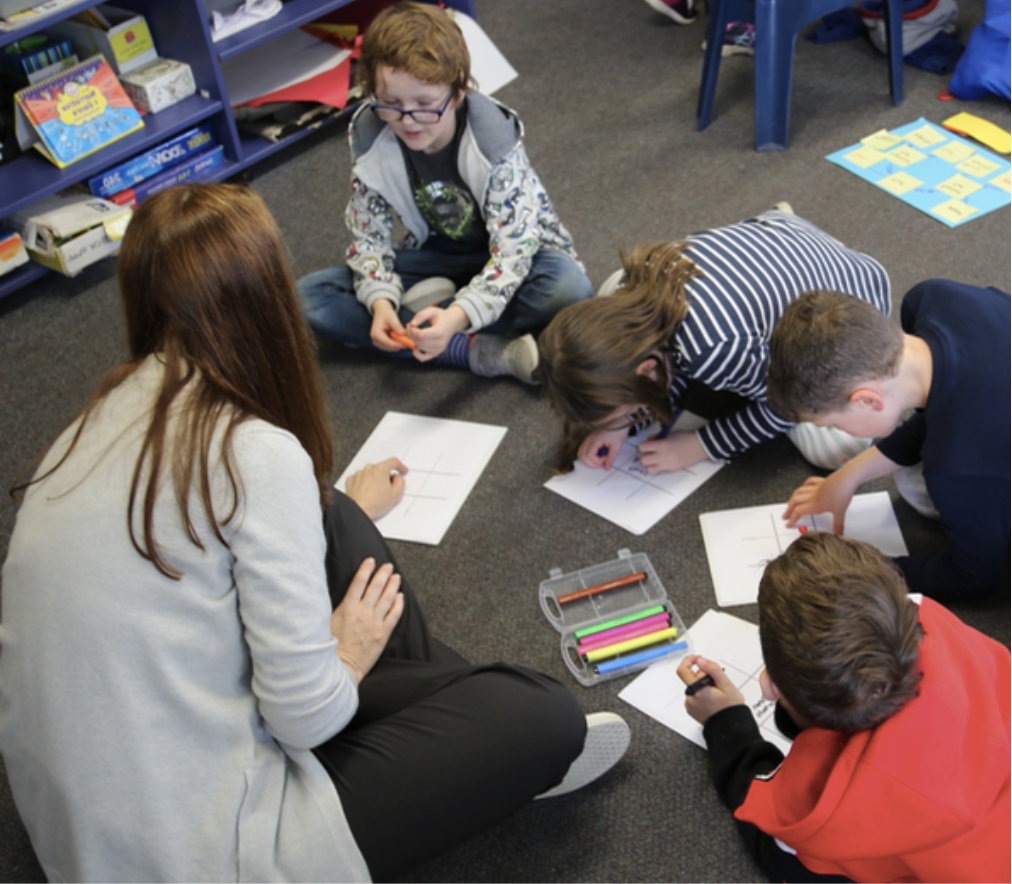by Rachel French
Teachers,
This is not another one of those education “fads.” You will not find yourself sitting in a faculty meeting, shoulders slumped, eyes rolling, wondering if this new initiative is actually going to be helpful.
Concept-Based Inquiry does what traditional curricula design cannot – it develops deeper thinking and promotes transferable understanding.
In this blog, we are going to look at the differences between a traditional two-dimensional model of instruction, and the three-dimensional Concept-Based approach (Erickson, Lanning and French, 2017).
What is Concept-Based Inquiry?
For those of you who are new to this idea, Concept-Based Inquiry brings together two distinct pedagogical practices; Inquiry-Based Learning and Concept-Based Learning.

Source: Marschall and French, 2017
Published by Corwin Press
Inquiry-based learning has a focus on the use of active questions to drive learning. Students are invited to take an active role in both posing and answering questions as they construct meaning.
When we pair this with Concept-Based Learning, those questions are designed to focus on transferable understandings that help students to make sense of their learning (Marschall and French, 2018). This approach helps students to see patterns, make connections, and ultimately, are able to apply their learning beyond the context of the unit. This is what we all want for our students at the end of the day!
Concept-Based Inquiry is an approach to teaching and learning that can be applied to any disciplinary or interdisciplinary curriculum K-12. By engaging students as thinkers, we foster student agency, build conceptual understanding, and promote learning transfer.
How is the Concept-Based Inquiry three-dimensional?
Two-Dimensional versus Three-Dimensional Curriculum/Instruction Models

Source: Used with permission H. Lynn Erickson, (2014).
In a traditional two-dimensional classroom, the focus is on the transmission of facts and skills. All too often teachers are doing so much of the thinking for their students!
The vast majority of educators do not even realize the impact their practice is having. More often than not they are simply modelling the way that they were taught when they were a student.
The two-dimensional model rests on a misguided assumption that knowing facts is evidence of deeper understanding. This approach promotes coverage of information and skills rather than transferable, conceptual understanding.
Concept-Based Inquiry honors the importance of fact as skills as a foundation for the third dimension concepts and conceptual relationships (Erickson, Lanning and French, 2017).
Conceptual understandings transfer through time, and across cultures and situations.
What are some other benefits of a Concept-Based Inquiry?
A Concept-Based unit builds conceptual schema in the brain to assist students in relating new knowledge to prior knowledge, and to transfer understanding from one context to another.
Concept-Based Inquiry educators are intentional and teach with clarity around the knowledge, skills and understandings of their unit. They use guiding questions and scaffold student thinking through a constructivist approach.
A Concept-Based teacher is just as concerned with intellectual development as they are with gaining knowledge and skills.
So, why does moving to a Concept-Based model of teaching just make sense?
Here are just a few reasons why:
- The importance of building conceptual understanding is supported by research that looks at how the brain processes and learns information (Bransford, 2000 & Medina, 2014)
- It creates deeper transferable learning inviting students to make connections to current events helping them see the relevance of their learning (Marschall and French, 2018).
- It promotes student agency by inviting learners to construct meaning and articulate their own understanding.
- This approach results in higher levels of engagement for both teachers and students.
How can I learn more about Concept-Based Curriculum and Inquiry?
If you’re looking to deepen your understanding of Concept-Based Inquiry and want more than just a snapshot of the reasons why Concept-Based Inquiry is so powerful, you can enroll in our next Concept-Based Inquiry in Action online course here.
Rachel French
Concept-Based Consultant and Coach
Best selling Author
Director of Professional Learning International and Co-founder of Connect the Dots International
Twitter: https://twitter.com/ProLearnInt
Facebook Group: https://www.facebook.com/groups/conceptbasedinquiry
Linked In: https://www.linkedin.com/in/rachel-french-pli/
References
Bransford, J. (2000). How people learn. Washington, DC: National Acad. Press
Erickson, H., Lanning, L., & French, R. (2017) Concept-based curriculum and instruction for the thinking classroom. Thousand Oaks, CA: Corwin.
Marschall, C., & French, R. (2018) Concept-Based Inquiry in Action.
Medina, J. (2014). Brain Rules. Seattle, WA: Pear Press. Thousand Oaks, CA: Corwin.

